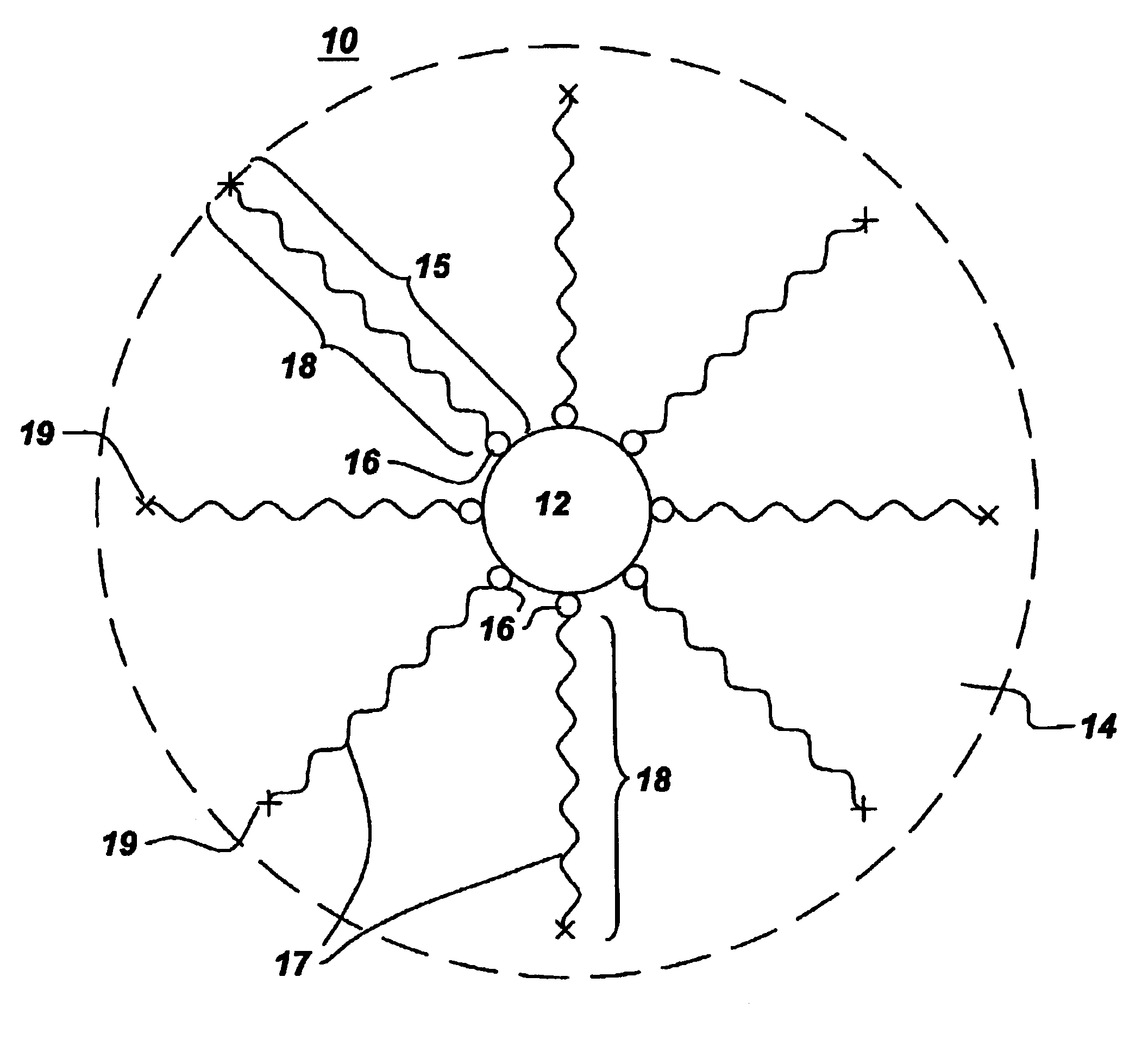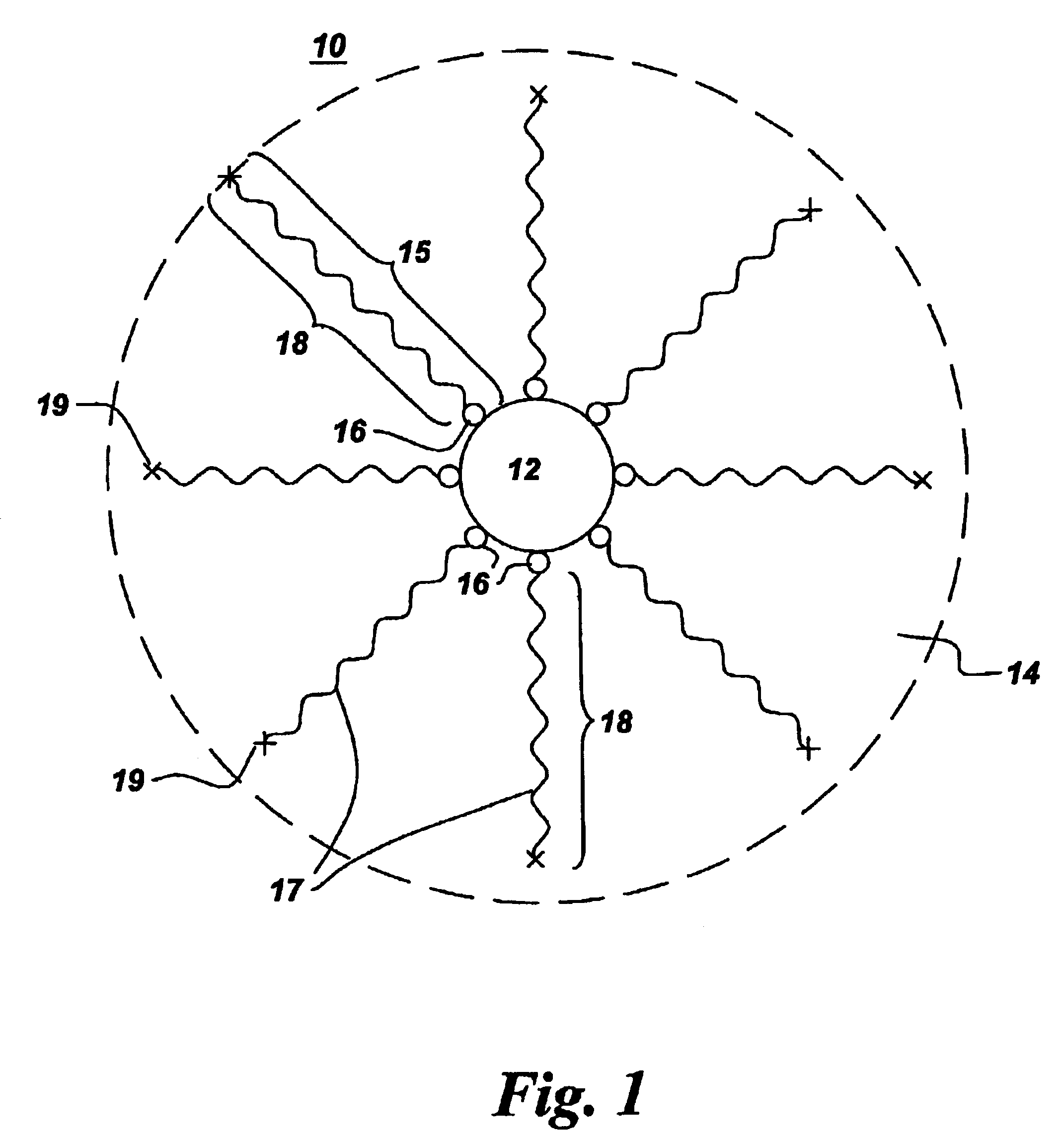Nanoparticle having an inorganic core
a technology of nanoparticles and cores, applied in the field of nanoparticles having a core, can solve the problems of loss of efficiency of nanoparticles in a given application
- Summary
- Abstract
- Description
- Claims
- Application Information
AI Technical Summary
Benefits of technology
Problems solved by technology
Method used
Image
Examples
example 2
A mixture of trimethylamine-N-oxide (7.60 mmol), lauric acid (4.56 mmol), and 7 ml of deoxygenated dioctyl ether, each individually dehydrated, were added under an inert atmosphere in a glove box to a 50 ml 2-neck Schlenk flask. The flask was attached to a Schlenk vacuum line, and a column-reflux condenser assembly was attached under a blanket of N.sub.2. The mixture was homogenized with vigorous stirring and heating to about 100.degree. C.
About 1.52 mmol of iron carbonyl (Fe(CO).sub.5) were then added to the slowly stirred reaction solution, which was at a temperature in a range from about 100.degree. C. to about 105.degree. C., resulting in instantaneous and aggressive reaction. Iron carbonyl addition was complete and the intense reaction subsided in less than a minute. The reaction mixture was then heated to a temperature in a range from about 120.degree. C. to about 130.degree. C. under N.sub.2 and maintained at temperature for 1 hour with vigorous stirring.
About 0.38 mmol of Ma...
example 3
A mixture of trimethylamine-N-oxide (7.60 mmol), 10-undecenoic acid or lauric acid (4.56 mmol), and 7 ml of deoxygenated dioctyl ether, each individually dehydrated and deoxygenated, were added under an inert atmosphere to a 50 ml 2-neck Schlenk flask. The flask was attached to a Schlenk vacuum-line, and a column-reflux condenser assembly was attached under a blanket of N.sub.2. The mixture was homogenized with vigorous stirring and heating to about 100.degree. C.
About 1.52 mmol of iron carbonyl (Fe(CO).sub.5) were then added to the slowly stirred reaction solution, which was at a temperature in a range from about 100.degree. C. to about 105.degree. C., resulting in instantaneous and aggressive reaction. Iron carbonyl addition was completed in less than a minute and the intense reaction subsided. The reaction mixture was then heated to a temperature in a range from about 120.degree. C. to about 130.degree. C. under N.sub.2 and maintained at temperature for 1 hour with vigorous stirr...
PUM
| Property | Measurement | Unit |
|---|---|---|
| diameter | aaaaa | aaaaa |
| diameter | aaaaa | aaaaa |
| diameter | aaaaa | aaaaa |
Abstract
Description
Claims
Application Information
 Login to View More
Login to View More - R&D
- Intellectual Property
- Life Sciences
- Materials
- Tech Scout
- Unparalleled Data Quality
- Higher Quality Content
- 60% Fewer Hallucinations
Browse by: Latest US Patents, China's latest patents, Technical Efficacy Thesaurus, Application Domain, Technology Topic, Popular Technical Reports.
© 2025 PatSnap. All rights reserved.Legal|Privacy policy|Modern Slavery Act Transparency Statement|Sitemap|About US| Contact US: help@patsnap.com



